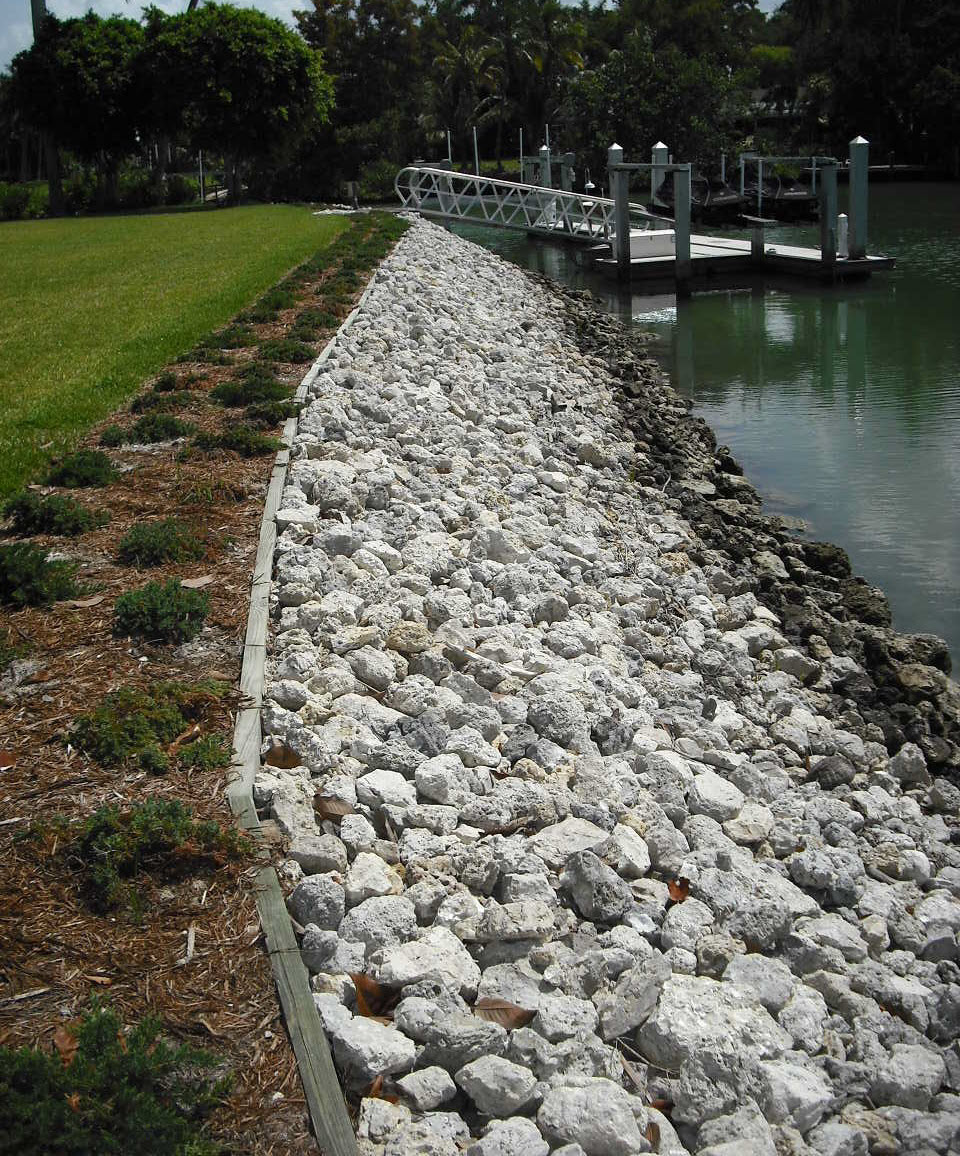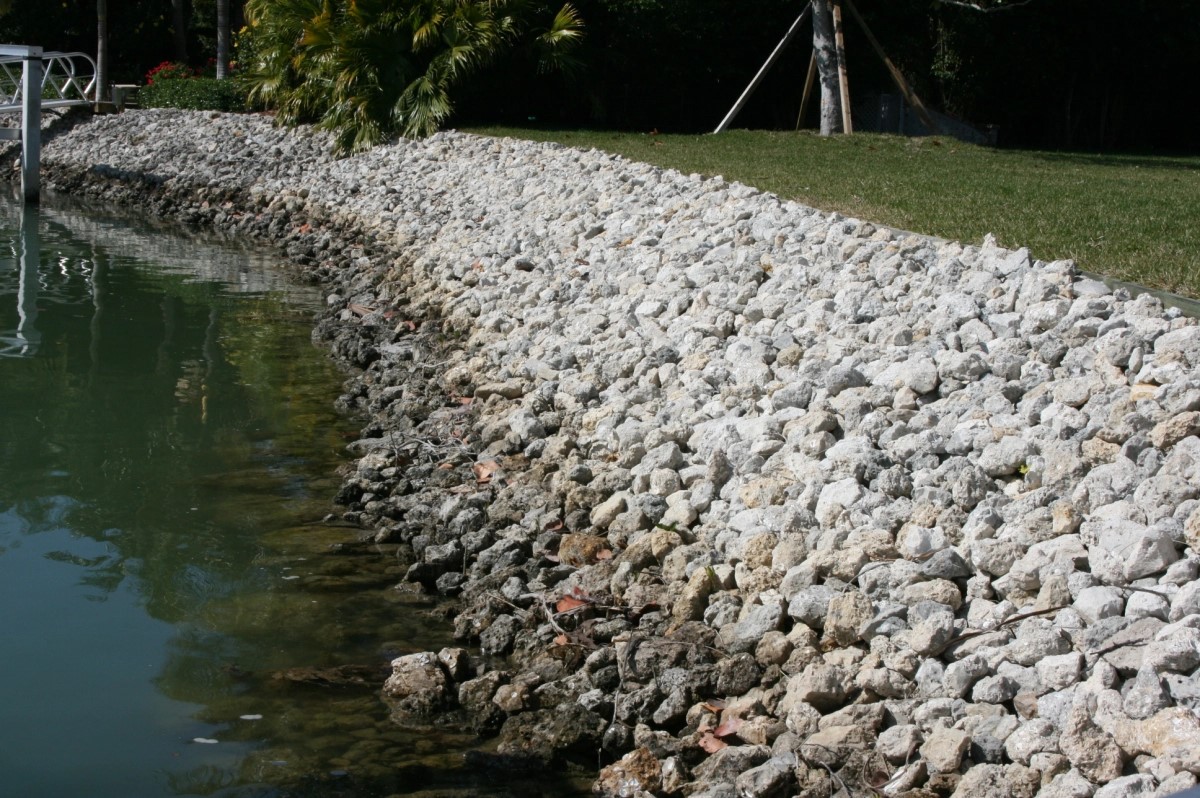Rip Rap Servicesin Metamora MI
Rip Rap Placement to Protect Your Shoreline from Erosion
We Are Locally Owned & Operated For Over 37 Years
Contact Us Today!
We Serve Businesses In And Around The Following Cities:
About Rip Rap Services
Understanding Rip Rap in Metamora
Rip Rap, also known as riprap, shot rock, or rubble, plays a vital role in many commercial properties’ stability in Metamora. Whether acting as a protective blanket for slopes against erosion or structurally fortifying a shoreline, it serves a crucial role in managing and mitigating natural forces that could destabilize property infrastructure. Comprehending the benefits, process and applications for rip rap, particularly in Metamora, may hold the key for commercial entities seeking resource-efficient, durable, and effective erosion control solutions.
Digging Deeper into Rip Rap
Rip rap rock significantly contributes to landscape architecture and civil engineering. Typically appearing as a layer of irregular and broken stones or concrete piled together, rip rap stone acts as an armor, strategically placed to prevent erosion on a slope, river bed, or embankment. This erosion control rip rap rock is tough, capable of withstanding high-impact forces such as water or wind.
In Metamora, commercial properties commonly leverage stone rip rap to protect structures located near bodies of water, such as lakes or rivers. Utilization of rip rap near me has prevented costly damages from floods, landslides, and other forms of natural calamities in the past.
Exploring the Rip Rap Process
How is rip rap gravel incorporated in commercial properties in Metamora? The main steps include site evaluation, material selection, preparation, and installation. Experts first conduct a comprehensive study to understand the terrain and the environmental factors at play. Decisions regarding material type (whether a rip rap rock or rip rap stone) and quantity are then concluded before the riprap erosion control installation begins.
D&J Contracting, a renowned provider in Metamora, assists businesses right from this preliminary stage. They understand landscapes better than anyone else in the region, and their team of trained professionals ensures seamless material selection and installation, avoiding hazards like rip rap culvert or rip rap driveway obstructions.
Rip Rap Applications for Business
Rip rap installations are not only about protection. They have numerous practical and aesthetic benefits that enhance the value of a commercial property. A landscape rip rap installation can immensely boost a property’s curb appeal, further enhancing its value.
In Metamora, business entities use rip rap for a host of applications. From basic protection to water body fortification – for instance, rip rap pond, and rip rap shoreline installations are a common sight here. Even complex tasks i.e., proper rip rap management for lake rip rap or beach rip rap applications, can be effectively achieved with advanced planning from seasoned industry players like D&J Contracting.
Advantages of Rip Rap
Implementing Rip Rap on commercial properties does come with a variety of benefits. For one, rip rap provides a practical solution to erosion control, with rip rap rock being extremely durable and low maintenance. It doesn’t call for consistent watering, fertilizing, mowing, or reseeding which emphasizes its eco-friendly aspect.
In specific cases where the property has a pond, pond riprap can significantly enhance the protective layer, maintaining water levels while simultaneously contributing to visual appeal. Riprap erosion control is a comprehensive solution, meeting both functional and aesthetic needs. Metamora businesses have certainly recognized the benefits, with a steady increase in requests for rip rap rock near me.
End Note
In broad strokes, rip rap is a proven, dynamic solution for commercial properties to prevent erosion and enhance property appeal. But to realize the full potential of this resource, the right partner is essential. A provider such as D&J Contracting, with their local knowledge, proven expertise, and commitment to quality, can help any Metamora business identify, design, and execute an optimal rip rap solution for them.
The benefits are manifold. Besides the primary gains of erosion control and infrastructure protection, the aesthetic contributions to landscaping are substantial. Furthermore, the enhanced durability and cost-effectiveness make it an ideal solution for businesses seeking long-term, value-for-money infrastructure and landscaping solutions.
In this context, rip rap is not only a solution but a strategic investment. Investment in rip rap today might be the key to sustained property value, minimized infrastructural risk, and secured business operations. So, if there’s anything resembling rip rap near me, consider exploring this dynamic solution, and find what it can do for your commercial property in Metamora. In the end, it is about taking the right decision, at the right time, with the right partner.
Rip Rap Services Gallery


Call Us Today to receive your Free Quote for
Rip Rap in Metamora
Serving: Metamora, Michigan

About Metamora, Michigan
According to the United States Census Bureau, the village has a total area of 0.83 square miles (2.15 km), all land.
| Census | Pop. | Note | %± |
|---|---|---|---|
| 1880 | 236 | — | |
| 1890 | 314 | 33.1% | |
| 1900 | 313 | −0.3% | |
| 1910 | 276 | −11.8% | |
| 1920 | 271 | −1.8% | |
| 1930 | 293 | 8.1% | |
| 1940 | 281 | −4.1% | |
| 1950 | 390 | 38.8% | |
| 1960 | 452 | 15.9% | |
| 1970 | 468 | 3.5% | |
| 1980 | 552 | 17.9% | |
| 1990 | 447 | −19.0% | |
| 2000 | 507 | 13.4% | |
| 2010 | 565 | 11.4% | |
| 2020 | 594 | 5.1% | |
| U.S. Decennial Census | |||
As of the census of 2010, there were 565 people, 216 households, and 151 families living in the village. The population density was 680.7 inhabitants per square mile (262.8/km). There were 245 housing units at an average density of 295.2 per square mile (114.0/km). The racial makeup of the village was 98.1% White, 0.4% African American, 0.5% Native American, 0.2% Asian, 0.2% from other races, and 0.7% from two or more races. Hispanic or Latino of any race were 1.4% of the population.
There were 216 households, of which 38.4% had children under the age of 18 living with them, 56.5% were married couples living together, 8.8% had a female householder with no husband present, 4.6% had a male householder with no wife present, and 30.1% were non-families. 24.5% of all households were made up of individuals, and 7.4% had someone living alone who was 65 years of age or older. The average household size was 2.62 and the average family size was 3.11.
The median age in the village was 39.4 years. 27.8% of residents were under the age of 18; 5.6% were between the ages of 18 and 24; 24.1% were from 25 to 44; 30.7% were from 45 to 64; and 11.7% were 65 years of age or older. The gender makeup of the village was 48.5% male and 51.5% female.
As of the census of 2000, there were 507 people, 188 households, and 137 families living in the village. The population density was 765.4 inhabitants per square mile (295.5/km). There were 204 housing units at an average density of 308.0 per square mile (118.9/km). The racial makeup of the village was 96.84% White, 0.39% Native American, 0.20% Asian, and 2.56% from two or more races. Hispanic or Latino of any race were 0.79% of the population.
There were 188 households, out of which 33.0% had children under the age of 18 living with them, 60.6% were married couples living together, 9.6% had a female householder with no husband present, and 27.1% were non-families. 19.7% of all households were made up of individuals, and 6.4% had someone living alone who was 65 years of age or older. The average household size was 2.70 and the average family size was 3.14.
In the village, the population was spread out, with 26.6% under the age of 18, 8.3% from 18 to 24, 34.9% from 25 to 44, 19.7% from 45 to 64, and 10.5% who were 65 years of age or older. The median age was 34 years. For every 100 females, there were 92.0 males. For every 100 females age 18 and over, there were 97.9 males.
The median income for a household in the village was $58,088, and the median income for a family was $63,750. Males had a median income of $41,563 versus $26,563 for females. The per capita income for the village was $19,548. About 3.6% of families and 3.6% of the population were below the poverty line, including 1.4% of those under age 18 and 7.4% of those age 65 or over.
Call Us Today to receive your Free Quote for
Rip Rap in Metamora
Related Services in Metamora, Michigan
We Serve Businesses In The Following Zip Codes:
48007, 48015, 48021, 48026, 48035, 48036, 48038, 48042, 48043, 48044, 48045, 48046, 48047, 48048, 48050, 48051, 48066, 48071, 48080, 48081, 48082, 48083, 48084, 48085, 48088, 48089, 48090, 48091, 48092, 48093, 48098, 48099, 48225, 48230, 48236, 48310, 48311, 48312, 48313, 48314, 48315, 48316, 48317, 48318, 48397